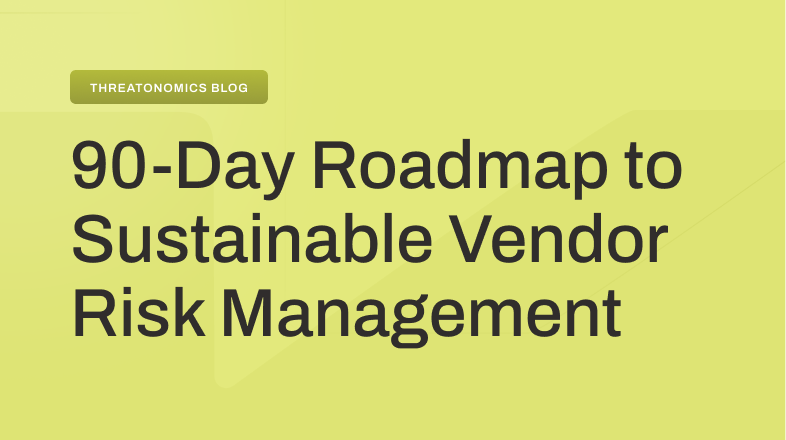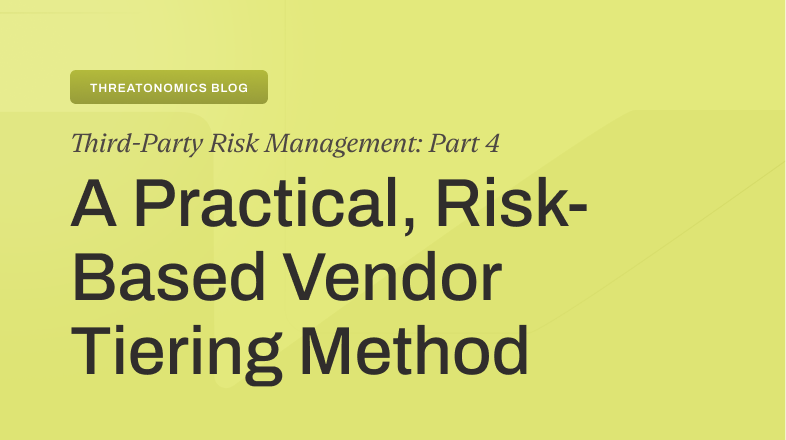A strategic briefing for enterprise leaders
Quantum computing is on the horizon, and with it comes a seismic shift in how organizations must think about cybersecurity risk. The ability of future quantum machines to break today’s cryptographic protections, what we call quantum decryption, could undermine the trust, confidentiality, and resilience of digital business.
This briefing series distills a highly technical topic into strategic insights for leaders. Part 1 explains why quantum decryption poses a threat. Part 2 lays out credible timelines for when the disruption may arrive. Part 3 offers practical guidance on how organizations can begin preparing now to safeguard sensitive data, protect customer trust, and ensure compliance in a post-quantum future.
The big picture
Transitioning to quantum-safe security is not a quick fix—it’s a multi-year organizational transformation, and organizations need to start now. History shows that major security upgrades always take longer than planned due to legacy systems, budget constraints, and the complexity of coordinating across departments and vendors.
The good news is that new quantum-resistant security standards have already been developed and published by government agencies. The challenge is execution: identifying what needs protection, planning the transition, and implementing new systems before quantum computers arrive.
Building your quantum readiness roadmap
Start with leadership and governance
Quantum risk isn’t just an IT issue—it’s a strategic business risk that requires executive attention. Here’s how to establish proper governance:
Secure executive buy-in: This should be discussed at the board and C-suite level, particularly for organizations in finance, healthcare, defense, or any industry handling sensitive long-term data. Frame it as a business continuity and trust issue, not just a technical project.
Assign clear ownership: Designate a senior leader (CISO or CTO) responsible for quantum readiness. This person should have the authority to coordinate across IT, legal, procurement, and business units.
Align with compliance requirements: Government agencies are already issuing guidance on quantum-safe cryptography. Make sure your security policies align with standards from organizations like NIST (National Institute of Standards and Technology) and CISA (Cybersecurity and Infrastructure Security Agency).
Take inventory: Where is encryption used?
You can’t protect what you don’t know you have. The first practical step is conducting a comprehensive inventory of where and how your organization uses encryption. This includes:
Network security:
- Secure website connections (HTTPS)
- Virtual private networks (VPNs)
- Remote access systems
- Secure file transfers
Authentication systems:
- Digital certificates
- Email encryption
- Employee login systems
- Multi-factor authentication
Data at rest:
- Encrypted databases
- Secure backups
- Archive systems
- Cloud storage
This inventory can be time-consuming, but automated scanning tools exist to help identify encryption usage across your infrastructure. The goal is to create a complete map showing every system that relies on vulnerable encryption methods.
Prioritize based on risk
Not everything needs to be upgraded at once. Focus first on data and systems with the highest risk:
High priority (upgrade first):
- Data that must remain confidential for 10+ years (intellectual property, health records, legal documents)
- Critical infrastructure and operational technology
- Long-term contracts and agreements
- Archives and backup systems
Medium priority:
- Customer data and payment systems
- Internal communications
- Software distribution and updates
- Standard business data with 3-10 year confidentiality needs
Lower priority:
- Short-lived data with confidentiality needs under 3 years
- Public-facing information
- Temporary communications
Build in flexibility: The principle of cryptographic agility
One of the most important lessons from past security transitions is this: don’t hardcode your security choices. The technical term is “cryptographic agility,” but the concept is simple—build your systems so you can swap out security methods without rebuilding everything from scratch.
Think of it like building a house with replaceable appliances rather than hardwiring everything into the walls. When technology improves, you can upgrade individual components without tearing down the whole structure.
Practical steps for building flexibility:
Separate security from application logic: Use security libraries and modules that can be updated independently of your core business applications. This way, upgrading encryption doesn’t require rewriting your entire software.
Standardize how you manage security: Use consistent approaches across your organization for storing and managing encryption keys. This makes future updates much easier.
Work with vendors who support flexibility: When selecting new systems or renewing contracts, verify that vendors can support security upgrades without requiring complete system replacements.
Plan for future changes: Accept that quantum-resistant cryptography is still evolving. Build systems that can adapt as standards mature.
Understanding the new quantum-safe standards
In 2024, NIST published the first three official quantum-resistant cryptographic standards after years of research and testing. These algorithms have been designed specifically to resist attacks from quantum computers.
You don’t need to understand the mathematics behind them—that’s what security engineers are for. What matters is knowing these standards exist, are ready for deployment, and come with trade-offs that affect business operations.
The transition approach: Hybrid security
Most organizations will use a “hybrid” approach during the transition period, running both old and new security methods simultaneously. This ensures compatibility with partners and customers who haven’t upgraded yet, while providing quantum protection for those who have.
Think of it like the period when some people had smartphones and others still used flip phones—systems needed to work with both during the transition.
Performance considerations
The new quantum-resistant algorithms are more demanding than current encryption:
Larger data overhead: Security keys and digital signatures are significantly bigger. For example, a quantum-safe signature might be 2,400 bytes compared to 64 bytes today. This affects storage requirements and network bandwidth.
Processing requirements: Some quantum-resistant operations require more computing power, which may impact performance on older systems or mobile devices.
Testing is essential: Before rolling out new security systems, test them in realistic conditions to understand how they affect your applications, websites, and user experience.
Protecting data today from tomorrow’s threats
Given the harvest-now, decrypt-later threat, you need to protect sensitive data now, even before completing a full quantum transition.
Immediate protection strategies
Upgrade symmetric encryption: The standard AES-256 encryption remains secure against quantum attacks and should be used for all highly sensitive data. If you’re still using older encryption standards like AES-128, upgrade to AES-256.
Isolate the most sensitive data: For data that absolutely must remain confidential for decades (trade secrets, long-term health records, classified information), consider additional layers of protection or isolation and plan to re-encrypt the data later with quantum-safe methods.
Rotate keys regularly: Regularly changing encryption keys limits the window of vulnerability. Even if an adversary harvests encrypted data today, frequent key rotation means they only get access to data from a limited time period.
Evaluate new key exchange methods: As quantum-safe protocols become available, evaluate them for protecting your most sensitive communications and data transfers.
Managing vendors and supply chains
Your quantum security is only as strong as your weakest link. Third-party vendors, cloud providers, and supply chain partners all play critical roles in your security posture.
Vendor requirements and coordination
Update procurement contracts: New contracts should require vendors to demonstrate plans for quantum-safe security and commit to timelines for adoption.
Assess vendor readiness: Ask key vendors about their quantum readiness plans. Are they tracking the threat? Do they have a migration roadmap? When will they support quantum-resistant algorithms?
Prioritize critical vendors: Focus first on vendors who handle your most sensitive data or provide critical security services.
The hardware challenge
One of the thorniest problems is hardware that can’t be easily updated:
Internet of Things (IoT) devices: Smart building systems, industrial sensors, medical devices, and other connected hardware often lack the ability to update their security software. These devices may need complete replacement.
Embedded systems: Equipment with long lifespans (industrial machinery, infrastructure components) may have security built in at the hardware level. Inventory these systems and plan for upgrades or replacements well before 2030.
Legacy infrastructure: Older systems that can’t support modern security updates should be identified and scheduled for replacement or isolation.
Continuous monitoring and preparedness
Quantum computing capabilities are advancing rapidly. Your organization needs to stay informed about developments that could accelerate or delay the Q-Day timeline.
Track quantum developments
Monitor major milestones: Keep an eye on announcements from leading quantum computing companies (IBM, Google, IonQ, and others) about qubit counts, error correction breakthroughs, and algorithm improvements.
Watch for warning signs: A sudden breakthrough in quantum hardware or algorithms could compress the timeline. Having an accelerated response plan ready is prudent risk management.
Stay updated on standards: Post-quantum cryptography standards will continue to evolve. Follow guidance from NIST, CISA, and other authoritative sources.
Test your readiness
Conduct scenario exercises: Run tabletop exercises simulating Q-Day—the moment when current encryption becomes obsolete. Test your incident response plans and business continuity procedures.
Red team testing: Have security teams evaluate what would happen if your RSA and ECC encryption suddenly were no longer secure. Identify critical points of failure and prioritize them for upgrade.
Measure progress: Establish metrics for tracking your quantum readiness: percentage of systems inventoried, high-priority assets migrated, vendor commitments secured, etc.
Your action plan
If this all seems overwhelming, start with these concrete first steps:
In the next 30 days:
- Brief executive leadership on quantum risk and the 5-10 year timeline
- Assign ownership for quantum readiness planning
- Begin preliminary inventory of encryption usage
In the next 90 days:
- Complete comprehensive cryptographic inventory
- Identify and classify data by confidentiality requirements
- Assess quantum readiness of critical vendors
- Review contracts for flexibility and upgrade provisions
In the next year:
- Develop detailed migration roadmap with prioritized phases
- Begin pilot testing quantum-safe algorithms
- Update procurement and vendor policies
- Establish ongoing monitoring and governance processes
- Budget for multi-year transition effort
Ongoing:
- Monitor quantum computing developments
- Track standards evolution
- Test and refine migration plans
- Coordinate with vendors and partners
- Report progress to leadership and board
The strategic imperative
The quantum threat is unique in cybersecurity because we have advance warning. Unlike ransomware or zero-day exploits that strike without notice, we can see quantum decryption coming. Organizations that act now have the opportunity to prepare systematically rather than scrambling in a crisis.
The question is no longer whether quantum computers will break today’s encryption—the question is whether your organization will be ready when they do. Starting your quantum readiness journey today is not just about avoiding future risk; it’s about maintaining trust, ensuring compliance, and demonstrating to customers, partners, and regulators that you take long-term security seriously.
The transition to quantum-safe cryptography is inevitable. Organizations that approach it strategically, starting now, will be better positioned to maintain security, trust, and competitive advantage in the post-quantum era.








